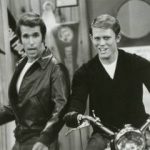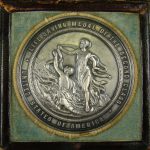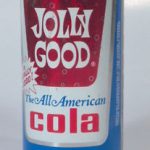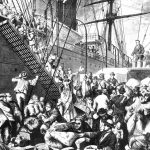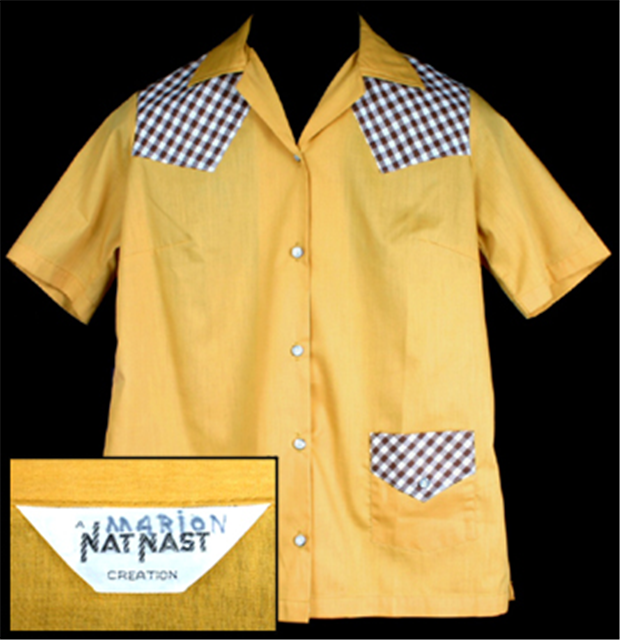
Like the fictional Shotz Brewery featured in the television series Laverne and Shirley that drew from one stereotype for which Milwaukee, Wisconsin is particularly famous — beer — this bowling shirt costume used in the television series Happy Days, also set in Milwaukee, highlights a favorite pastime of Wisconsin in the late 1950s and early 1960s. Worn by Marion Ross, who played Marion Cunningham on Happy Days during its 1974-1984 run, this shirt was produced by bowling shirt manufacturer Nat Nast. The shirt’s back bears the bowling team’s name, “Leopard Lodge League,” a reference to the fictional fraternal organization to which her television husband, Howard Cunningham (Tom Bosley) belonged.
Although membership in fraternal organizations was declining in the 1950s from its peak earlier in the twentieth century, writers for Happy Days incorporated the theme into the show because popular perception linked the organizations to the time period. Television programs from the 1950s and 1960s helped create this association. From “The International Order of Loyal Raccoons” in the show The Honeymooners to The Flintstones and its “Royal Order of the Water Buffaloes,” the use of fraternal organizations had proven to be a successful source of humor. Happy Days, set in the 1950s and 1960s, adopted this trend to help capture the spirit of the period.
However, Happy Days, in an attempt to sentementalize the 1950s, does not address the racist practices of these organizations. In Milwaukee, the local chapter of the Fraternal Order of the Eagles, wouldn’t allow African American members into the Eagles Club on Wisconsin Avenue (now site of The Rave). Learn more about this story from WUWM 89.7, Milwaukee’s NPR.
Television and movies also helped make the sport of bowling more popular. Movie shorts featuring bowling in the 1940s led to television broadcasts dedicated specifically to the sport beginning in the 1950s. This exposure significantly bolstered bowling’s popularity among the growing middle-class after World War II.
This story was edited and adapted from ALH’s original Curators’ Favorites article, September 2006.
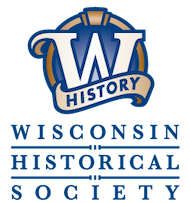
SOURCES
TV Land website.
TV Acres website.
